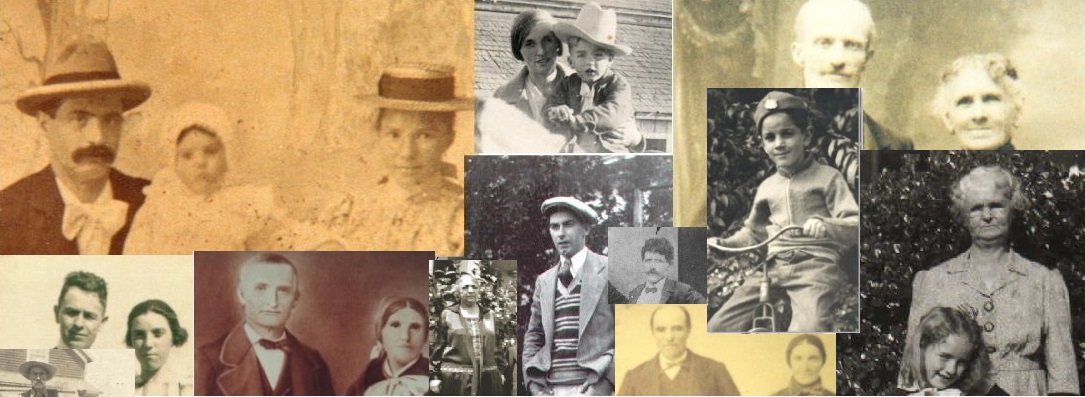When AncestryDNA announced that they had unveiled new features, I couldn’t wait to go to AncestryLab and activate them. Common Ancestors is the one I’m most excited about. Now that I’ve used it for a couple of weeks, I have a couple about how it works. Maybe someone knows the answers.
Where Does AncestryDNA Get The Common Ancestor Information From?
It seemed obvious to think that the information comes from comparing your match’s tree to your own, right? That seems logical. It doesn’t always seem to be the case though.
I’ve reached out to all my DNA matches who have AncestryDNA has marked under Common Ancestors. I expected to get responses back showing where the person’s ancestor fits in.
The first response I received was from a woman who manages her father’s kit. I was surprised when she stated that she didn’t have her father’s ancestry in her Ancestry family tree yet.
Perplexing, isn’t it? Maybe it’s a glitch, an algorithm misfire. If the Common Ancestors aren’t derived from a tree to tree comparison, how did AncestryDNA make the connection?
Does Common Ancestors Fill In Generations From Other Trees?
I expect to see a robust family tree if Common Ancestors pulls someone from the 1700s as the person we have in common. So, it baffled me when I checked a match’s tree, but they don’t really have enough generations to make a determination.
This is an example of what I am referring to. The person has 38 people in their tree. They’ve told me they’ve only gotten part way into the 1800s with their research. Yet, AncestryDNA has picked a common ancestor born in 1755.

Is Common Ancestor making an educated guess where we might link up? Is it searching through other shared match trees and filling in the blanks? Is it searching through AncestryTrees looking for the missing ancestors?
I don’t see how the system has made this leapfrog over the person’s yet to be filled in pedigree chart to my ancestor in the 1700s. And, if it is comparing to other family trees among our shared matches, why aren’t they showing as having common ancestors as well? Show your work AncestryDNA! I need to know how you jumped from C to X.
Does The Common Ancestor Feature Default To The Paternal Line?
Stay with me on this one. Say you have ancestors from a small village. There is going to be a lot of intermarriage. Endogamy will be prevalent. Let’s say you connect with someone twice (at least twice!)
The first connection iss on your maternal line. You both share the same fourth great grandparents.
In the second example, the connection is on your paternal line. However, in this case, the ancestor is a generation or two futher back. This ancestor was marriage twice. You descend from one wife and your match descends from another. You only share one ancestor with your DNA match on this line.
Your shared DNA could come from marriage one (maternal fourth great grandparents) or your shared DNA could come from marriage two (a half relationship, sharing just one paternal ancestor). It might come from both.
In this example, AncestryDNA has chosen to highlight the second example under Common Ancestors. This makes me think that paternal relationships take precedence over maternal ones. Otherwise, it would seem more logical to go with the closer maternal shared couple over the single shared ancestor who is farther back.
I Love It, But I’m Skeptical
I really like this feature. I’ve been able to prove a couple relationships already. I’ve met a couple of new cousins. But, given my experience, I am skeptical.
I’m not sure the feature can deal with multiple blood relationships within the same tree. I am unclear how it’s filling in the blanks when there is a lack of ancestors in one of the trees used for comparison.
I’m guessing this is like many Ancestry “suggestion” features. It’s a useful tool, but you need to analyze what you see, do some research, and see if it really fits.
Genetic genealogy is intimidating and confusing.
Genetic Genealogy: The Basics and Beyond is a good guide to start with.
Available on Amazon.com
Note: In order to use the Common Ancestors feature, you need to log into AncestryDNA. Click on Extras, then click on Ancestry Lab. From there you can turn on the feature by making sure New & Improved DNA Matches is enabled.









Melody-
Other bloggers have referred to Ancestry’s invisible “Big Tree” as the source of their Common Ancestor hints. Something that they’ve assembled from the trees of members. They have also suggested that this same source is behind the hints for “Potential Father/Mother” that sometimes show up.
So obviously these common ancestor suggestions have to be taken with a grain of salt. For the ones I’ve looked at so far where they jump several generations, I’ve tried to develop a “quick and dirty” tree, adding records from Ancestry on what they have and try to connect with what I know to see if I can confirm the connection. In some cases it works out, in other cases not.
What I like is that it has made the identification of common ancestors and confirmation of my own research much more efficient, albeit cautiously considering the ‘hints”. Your endogamy point is an excellent caution for lines that have that potential
Bill Greggs